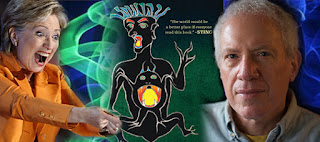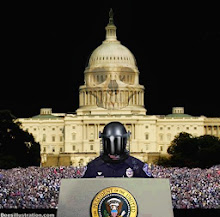To disregard the problems facing the Earth and to proceed with business as usual in education would be a betrayal of trust. Our students want to know how to make a difference. They need hope. And it won’t come if all we can offer is another scientific theory or technological fix. We must expand our vision to seek non-scientific alternatives. To make a difference, we must search for different understandings. Let us look to the wisdom of our ancestors. They believed that intelligence is not restricted to humans but is possessed by all creatures – plants as well as animals — and by the Earth itself.
They also believed in spirits. Human welfare was understood to depend on tapping into these wellsprings of wisdom, and all ancient societies (just like indigenous peoples today) had specialists skilled in communication with the natural world and with spirits. These people we now call shamans, and this article argues for the inclusion of shamanic practice in the educational curriculum. Shamanism gives working access to an alternative technique of acquiring knowledge. Although a pragmatic, time-tested system, it makes no claim to be science. Its strengths and limitations are different from those of the sciences and thus complement them. Being affective and subjective, shamanism offers another way of knowing.
Reason sets the boundaries far too narrowly for us, and would have us accept only the known – and that too with limitations – and live in a known framework, just as if we were sure how far life actually extends. . . . The more the critical reason dominates, the more impoverished life becomes. . . . Overvalued reason has this in common with political absolutism: under its dominion the individual is pauperised. – Carl Jung
Of course science will offer some valuable new directions, but at the same time we must expand our vision to seek non-scientific alternatives. To make a difference, we must search for different understandings. I am fortunate to live in a country, New Zealand, where many of my compatriots have an understanding of past and future that is fundamentally different from the prevailing ‘Western’ view. Most in our civilisation consider it self-evident that we stand facing the future with the past behind us, but traditionally for New Zealand Maori it is the future that is behind them.
They stand facing the past and their ancestors, who are a living presence in spirit. It is the vision of the ancestors that guides the present generation into the unseen future, with one clear and overriding purpose: to prosper the generations yet to be born.
Nga wa o mua “The days of the past to which we are coming.” — Maori proverb
Let us take our cue from Maori and consider the vision of our own ancestors. No matter what our ethnic background, we will discover that our ancestors (except some of the most recent) believed, like Maori, in the existence of spirits. They also stood in awe of the rich diversity of life forms, and they believed there is mutual interdependency between these forms, humans included, given that everything that exists is alive and conscious. They were of the opinion that intelligence is not restricted to humans but is possessed by all creatures – plants as well as animals — and, for that matter, by the Earth itself. Rock, soil, stream, ocean, wind, air, sky, the stars – all are imbued with consciousness.
Recognising that the Earth and many of its creatures vastly predate humanity and are therefore possessed of much older wisdom, our forebears honoured selected landforms, trees, plants, and animals as their ancestors. They understood that there is deep wisdom in the rhythms of the Earth and an infinite variety of life experience stored by our fellow creatures and by spirits. Human health and welfare were understood to depend on tapping into this wellspring of wisdom. On a planet that is everywhere alive, conscious and inspirited, humans were believed to have many wise allies for counsel and aid.
What is the relevance of this to our current concern about the fate of the Earth? If the ‘star billing’ given by us moderns to our species is unwarranted – if sapiens (wisdom) is not exclusive to homo (humanity) – then could it be that the fate of the Earth is not exclusively or even primarily in our hands? By our ancestors’ measure, we have grossly exaggerated our self-importance in the intricate web of life. Is it not conceivable that among our intelligent companions on this whirling voyage through space are some who may be capable of restoring the balance we humans have disturbed, of undoing the damage we have wrought? Possibly there are many more shoulders sharing this burden than we think.
Some of the strongest of those shoulders may be the smallest, as was demonstrated dramatically in the aftermath of the 2010 Gulf of Mexico oil well explosion. As millions of barrels of oil poured unchecked into the ocean from the uncapped well, there was a scramble to devise human technologies that would mitigate an environmental disaster of colossal scope. It took months before the flow was stopped, but in the meantime it was discovered that petroleum-eating bacteria had flourished in the oil plume and contained a vast amount of it. The micro-organisms had not only multiplied at an astounding rate, they also had ramped up their own internal metabolism to digest the oil efficiently. They formed a natural clean-up crew capable of reducing the amount of oil in the undersea plume by half every three days.
We may take hope from the fact that this kind of help is available, but we must also start paying attention, as did our ancestors, to what our travelling companions have to say to us. Every ancient society developed communication with the natural world and with spirits, and they had specialists skilled in the techniques of that communication. These women and men were held in high regard, but they were approached with trepidation, because they were perceived to be communing with mysterious and awesome forces. In Old French they were called “sorcier,” those in touch with the “Source.” The Anglo-Saxons spoke of the “Ways of Wyrd” known to “wizards” and “witches.”
Shamanism is the term now applied to what has come to be recognised as a worldwide phenomenon, whose practice can be found as far back as we can go in human history. Given the association in the popular imagination of the term shamanism with ‘native, tribal’ cultures, it will come as a surprise to many to learn that their own ancestors practiced shamanism. We are all descendants of shamanic peoples.
Research over the past 150 years by scholars of comparative religion, pre-history and anthropology has revealed strikingly close similarities in the shamanic techniques employed in ancient cultures and in modern indigenous societies worldwide.(4) The word shaman is borrowed from one of those contemporary indigenous societies, the Tungus of Siberia. We are fortunate there are native shamans still at work, despite the sustained, and in many cases brutal, efforts of colonial governments, Christian churches, and medical authorities to suppress them. In the past forty years there has also been a Western revival of shamanic practice inspired by indigenous teachers and reinforced by the recognition that these ancient spiritual traditions are our shared inheritance.
The Role of Shamans
What do shamans do? They work to maintain or restore harmonious balance between humans and the rest of nature through powerful connections with spirit helpers. This requires a mastery of the techniques of journeying.
A shamanic journey is a trance state purposefully induced by a mind-altering activity such as rhythmic movement or repetitive sound, most often steady and sustained drumming. Less commonly, a psychotropic substance is ingested. In their altered state of consciousness, using disciplined techniques, individuals can experience visions of flying or entering into the Earth. On their journeys, participants ask animal or guardian spirits to appear and help in finding the answer to a question about their life or about someone else who has requested aid. Healing is the primary shamanic work. This includes healing of the Earth and its plants and animals. It also includes human healing, both the healing of dissension in groups and of physical and emotional illness in individuals. In the shamanic worldview, dis-ease is understood to result from loss of connection to the spirits of nature and consequent loss of soul – individual or collective.(6) Shamanic journeys take us to places where we can recover fragments of lost soul.
Journeying is useful for a wide range of practical purposes, and the experience can be powerful, often surprising the beginner with the cogency and helpfulness of what is revealed. Here is a personal example. Buying property is tricky at the best of times, but when you have been living in America for 30 years and would like to find a place in your home country, New Zealand, it’s a major challenge. That’s how it was for me in 1991, and I needed help. I received it from a guardian spirit, an eagle. In a shamanic journey, the eagle took me flying over the Marlborough Sounds and showed me a remote property in such detail that I was able to draw a sketch map: the position of the house in relation to two garden plots; the boat shed; the jetty; the shape of the bay. My wife Jo and I brought the map with us when we came to New Zealand three years later. We found a place listed at the first real estate office we visited, and when we were taken to the land, we knew within ten minutes it was the place to which my eagle had flown me. We had no need to look at other properties.
I have another story of shamanic success in real estate. I once participated with 30 others in a shamanic journey to look for a new campus for the California Institute of Integral Studies, the small San Francisco post-graduate school of which I was then president. Many participants found themselves led by their spirit guardians to one particular city neighbourhood. Three people in the journeying group described ornamentation on the outside of a building. One went down a chimney and saw a room with a polished wooden floor and an oriental rug. Another person reported a delicious aroma of baking. Most amusingly, some in the journeying group remarked on a pervasive smell of marijuana in the area. Little wonder. Three weeks later, we found an excellent property half a block from the corner of Haight and Ashbury Streets! As we were to discover, the nearest shop, just two hundred metres from our new campus, was a deli, whose baked goods would become favourites of students and faculty, and the journey details of the ornamentation on the building, the chimney, and the room with the polished wooden floor and oriental rug all proved equally accurate.
As this suggests, shamanism can be fun! Shamans are theatrical. In order to rivet the attention of participants, shamans typically wear dramatic costumes and display colourful talismans as they burn herbs and rhythmically whirl, stamp, clap and drum loudly. Almost all of the physical senses of the participants are engaged. As teachers, we should acknowledge shamans as exemplars of excellent educational practice. People learn most forcefully from forms that engage more than their intellects. They remember best what they do, rather than what they read or are told. Effective education must have a large experiential component, and shamanic practice can be a totally engaging experience.
Shamans may be playful, but they are not playing games. Their work has a serious purpose: the evocation of powerful spiritual forces. Shamanic practitioners, as a consequence, must assume responsibility for the welfare of the individuals and groups they guide. As with psychotherapy and similar practices that may bring to awareness deep subconscious memories arousing strong emotions, shamanism must be practiced with disciplined restraint and ethical integrity. Also, with humility. “In shamanism (as well as with other forms of healing) it is not the shaman who does the work,” shamanic counselor Sandra Ingerman observes. “Shamans are just the instruments through which the power of the universe works. Therefore, asking the spirits for help and trusting that they will be there is the basis of the shaman’s responsibilities. Remember, an instrument cannot play itself.”
Reconnecting With Nature
Effective education must have a large experiential component, I said. Given the current critical imbalance between humans and other species, nature should be a primary area of experiential education. We should balance the abstractions of our classrooms with experiences of the wholeness of living, growing wild things. Following the centuries-old practice of shamans, students and their teachers should spend time in wilderness to restore direct awareness of the intricate interconnections that sustain life. Quiet time spent away from the elaborate constructions of our cities can help us gain the stillness in which we may hear nature’s voices.
Shamanic journeying also can lead to an intimate acquaintance with Nature. In his book The Adventure of Self-Discovery, psychotherapist Stan Grof reports that in the journeys he and wife Christina direct,(8) many participants experience “complete and realistic identification” with animals and plants and are given extraordinary knowledge of organic processes. In this mode of consciousness, “it is possible to gain experiential insight into what it feels like when a cat is curious, an eagle frightened, a cobra hungry, a turtle sexually aroused, or when a shark is breathing through the gills.” This can lead to profound new understandings. “Subjects have reported that they witnessed botanical processes on the sub-cellular or molecular level” and had “experiences of plant consciousness.”
Grof commented that to speak of plant consciousness might seem “fantastic and absurd … to a traditional scientist.”(10) He was writing in the late 1980s when biology was dominated by molecular geneticists, who, at the time, were supremely confident that all biological function was programmed by DNA sequencing. In the subsequent 20 years, however, there has been a conceptual revolution in genetics and cell biology, with the recognition that cellular networks in organisms are dynamic systems responding intelligently to changing external conditions, even modifying the structure of DNA where necessary. In his 2005 book, The Biology of Belief, cell biologist Bruce Lipton writes:
… each cell is an intelligent being that can survive on its own. . . . These smart cells are imbued with intent and purpose; they actively seek environments that support their survival while simultaneously avoiding toxic or hostile ones. Like humans, single cells analyse thousands of stimuli from the microenvironment they inhabit. Through the analysis of this data, cells select appropriate behavioral responses to ensure their survival. Single cells are also capable of learning through these environmental experiences and are able to create cellular memories, which they pass on to their offspring.
On the basis of such path-breaking research, Fritjof Capra concludes: “The organising activity of living systems … is mental activity. . . . Mind … is immanent in matter at all levels of life.”
Shared Consciousness
We have already observed that this perception of universal consciousness is the crux of the shamanic worldview. By entering the eagle’s keen eye, the bear’s great strength, the herb’s healing power, or the flame’s searing heat, the shaman shows us passageways to the spirit wisdom of natural forms. Shamans are shape-shifters, teaching that the boundaries between forms are not as impermeable as they may seem. Dramatically, this ancient knowledge that “there is no wall between species,” rejected for three centuries by reductionist Cartesian science, has been rediscovered in this decade by molecular biologists. Lipton again:
Recent advances in genome science have revealed [that] living organisms … actually integrate their cellular communities by sharing their genes. It had been thought that genes are passed on only to progeny of an individual organism through reproduction. Now scientists realise that genes are shared not only among the individual members of a species, but also among members of different species. The sharing of genetic information via gene transfer speeds up evolution since organisms can acquire ‘learned’ experiences from other organisms. Given this sharing of genes, organisms can no longer be seen as disconnected entities; there is no wall between species.
“It seems that every process in the universe that one can observe objectively in the ordinary state of consciousness also has a subjective experiential counterpart” in altered states.(14) This observation by Stan Grof suggests an important reason for the inclusion of shamanic practice in the educational curriculum. Shamanism gives working access to an alternative technique of acquiring knowledge. Although a pragmatic, time-tested system, it makes no claim to be science. Its strengths and limitations are different from those of the sciences and thus complement them. Being affective and subjective, shamanism offers another way of knowing.
Science As A Construct
In this it serves as shock therapy for students who have grown up with the unexamined belief that modern science is the only true path to knowledge. They have been taught that the scientific method is of a different order from all other human systems of understanding. The claim is that science, and only science, provides a clear window on reality and has the ultimate capacity to answer every question about nature. These assertions are untenable. Modern Western civilisation’s representation of reality is limited like that of every other civilisation. The sciences are cultural constructions to help us get by in the world. “A scientific theory is just a mathematical model we make to describe our observations,” cautions Stephen Hawking. “It exists only in our minds.”(15) Science is a simplification of the universe, which in its unfathomable vastness is always threatening to overwhelm the limited capacity of the human organism to comprehend. “I suspect there could be life and intelligence out there in forms we can’t conceive,” observes Martin Rees, British Astronomer Royal. “It could be there are aspects of reality that are beyond the capacity of our brains.”
Nonetheless, science reigns supreme and blinds most of our students, like the vast majority of us, to the diverse and richly varied paths to knowledge offered by other civilisations, contemporary and historic. “Today, the doors of the faerie hills remain sealed against us, for we keep the eyes of our mythic consciousness shut equally tight, refusing to allow cracks to appear in the walls of our present, desacralised world-view.” The writer is Mara Freeman, whose field is Celtic and British folklore. “Few of us dare to open what W.B. Yeats called the ‘flaming door’ and explore the power that crackles on the thresholds of our reality structures. But to do so might send a revitalising current through the wasteland of our culture.” Traditionally, Freeman says, it was shamans who had the courage and skill to throw open the “flaming door.” “Those skilled in walking between the worlds knew how to harness the power of the threshold where the normal rules of time and space hang suspended.”
Shamans are edge-walkers and shape-shifters, who dispel the illusion that all is fixed and orderly and controllable.
A stone’s throw out on either hand From the well-ordered road we tread, And all the world is wild and strange; Churl and ghoul and Djinn and sprite Shall bear us company to-night, For we have reached the Oldest Land Wherein the powers of Darkness range. – Rudyard Kipling
Shamanism is an acknowledgment of the awesome spiritual powers that shape the universe. It is an acknowledgement that mystery will remain despite all our science and scholarship.
Let us encourage our students to delight in the permanence of the unknowable and to sit in reverence and awe before the majesty of the mysterious. Let us encourage them also to hear the message of the shamans that the moving force in the universe is spirit, which makes life possible and gives it meaning. The exhilarating news the shamans bring is that we are not alone. On a planet that is everywhere alive, conscious and inspirited, humans have many wise allies for counsel and aid. We should lay to rest our exaggerated fears that we do not have the resources to keep this show going. Equally, we must learn humility. The hubris of homo sapiens in claiming superiority over all other species has been the source of severe damage. Humanity is merely one spirit form among countless billions.
The smallest indivisible reality is, to my mind, intelligent and is waiting there to be used by human spirits if we reach out and call them in. We rush too much with nervous hands and worried minds. We are impatient for results. What we need … is reinforcement of the soul by the invisible power waiting to be used. . . . I know there are reservoirs of spiritual strength from which we human beings thoughtlessly cut ourselves off. — Henry Ford, Detroit News, 7 February 1926
————————–
Written by John Broomfield. John is a teacher, writer, educational consultant and leader of cross-cultural study tours and shamanic workshops. Former Professor of History at the University of Michigan and President of the California Institute of Integral Studies, he is the author of Other Ways of Knowing: Recharting Our Future with Ageless Wisdom published by Inner Traditions. A student of sacred ecology and interspecies communication, he lives on remote land in the Marlborough Sounds, NZ, to learn directly from animals, plants and earth. His website is www.eagle-tours.co.nz and he is available at eagle@ts.co.nz.
SOURCES
This article is reprinted with permission from Social Ecology: Applying Ecological Understanding to our Lives and our Planet (eds. David Wright, Catherine Camden-Pratt & Stuart Hill, Stroud, Hawthorn Press, 2011).
C.G. Jung: Memories, Dreams, Reflections (ed. Aniela Jaffé, New York, Pantheon, 1961) p. 302
Terry Hazen et al.: ‘Deep-sea Oil Plume Enriches Indigenous Oil-degrading Bacteria,’ Science (26 August 2010, online)
Piers Vitebsky: Shamanism (Norman, University of Oklahoma Press, 2001); Jeremy Narby & Francis Huxley eds.: Shamans Through Time: 500 Years on the Path to Knowledge (New York, Tarcher/Putnam, 2001); Ralph Metzner: The Well of Remembrance: Rediscovering the Earth Wisdom Myths of Northern Europe (Boston & London, Shambhala, 1994); Tom Cowan: Fire in the Head: Shamanism and the Celtic Spirit (San Francisco, Harper, 1993); Joseph Campbell: The Way of the Animal Powers: Historical Atlas of World Mythology, vol. 1 (San Francisco, Harper & Row, 1983); Mircea Eliade: Shamanism: Archaic Techniques of Ecstasy (translated by Willard R. Trask, Princeton, Princeton University Press, 1972).
Narby & Huxley, op. cit., pp. 243-305; Vitebsky, op. cit., pp. 150-153 & 168-170; Roger N. Walsh: The Spirit of Shamanism (Los Angeles, Tarcher, 1990); Michael Harner: The Way of the Shaman (San Francisco, Harper, 1980); Sandra Ingerman: Soul Retrieval: Mending the Fragmented Self (San Francisco, Harper, 1991); Jeanne Achterberg: Imagery in Healing: Shamanism and Modern Medicine (Boston & London, Shambhala, 1987): Journal of Shamanic Practice (Olivenhain, California, twice yearly).
Stanislav Grof: The Adventure of Self-Discovery: Dimensions of Consciousness and New Perspectives in Psychotherapy and Inner Exploration (Albany, SUNY, 1988) pp. 52-53 & 58-59
Grof, op. cit., p. 59
Bruce H. Lipton: The Biology of Belief: Unleashing the Power of Consciousness, Matter and Miracles (Carlsbad CA, Hay, 2005), pp. 37-38
Fritjof Capra: The Hidden Connections (London, Harper Collins, 2002) p. 30. See also Evelyn Fox Keller: The Century of the Gene (Cambridge, Mass.; Harvard, 2000).
Lipton, op. cit., pp. 44-45
Grof, op. cit., p. 62
Stephen W. Hawking: A Brief History of Time from the Big Bang to Black Holes (NY, Bantam, 1988) p. 139
Telegraph.co.uk, 22 February 2010
Mara Freeman: ‘The Flaming Door,’ Parabola, vol. 25, no. 1, February 2000, pp. 45-51
Rudyard Kipling’s Verse: Inclusive Edition, 1885-1918 (London, Hodder & Stoughton,), pp. 575-576




















































